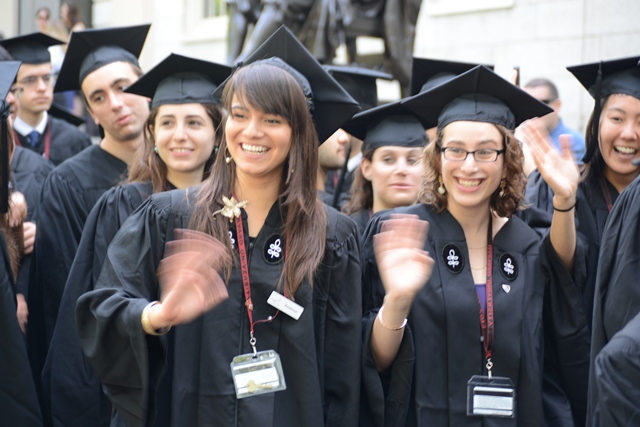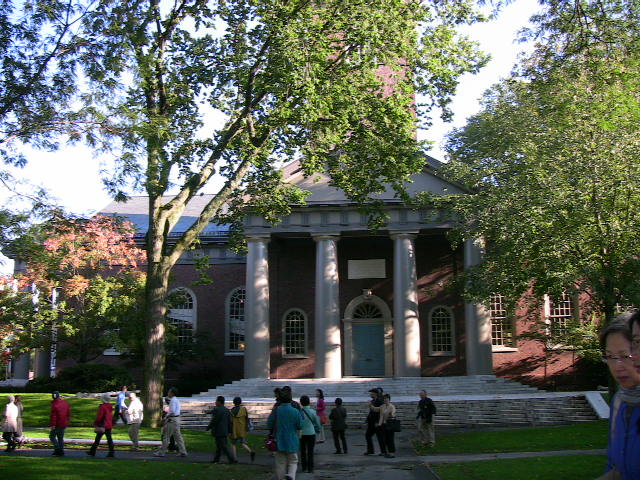Introduction to Educational System of USA
Higher education* has undergone several major changes over the last50 years, with the most prominent shift being toward mass education. By 1999, 66 percent1 of the population had some level of college or university education, compared with only 18 percent in 1940 and 25 percent in 1967. A comparative view of education achievement can be seen in the net entry rates for college and university education in the United States (52 percent); Canada (49 percent); the United Kingdom (43 percent); France (33 percent); Hungary (20 percent); Thailand (14 percent); Mexico (14 percent); China (6 percent); and Senegal (3 percent). U.S. higher education is decentralized, diverse, and inclusive. At the national level is the Department of Education, but its authority and focus are limited; rather, each of the 50 states have primary responsibility for supervising higher education within their borders. The United States has no equivalent to the centralized national ministry of education found in many countries.Of the 4,064 higher education institutions in the United States in 1998, 58 percent were private; nevertheless, public institutions enroll 79 percent of college students.
Doctorate-granting and research universities represent 7 percent of all institutions but enroll 27 percent of the student population. Specialized institutions that award credentials only in specific fields (such as electronics and cosmetology) represent approximately 19 percent of all institutions but enroll only 3 percent of the student population. As Figure 2 shows, the largest percentage of institutions (42 percent) comprises two-year colleges, which award associate degrees and offer certificate programs. Four-year baccalaureate colleges account for 15 percent of all higher education institutions in the United States.5 Postsecondary education institutions in the United States enrolled more than 14 million students in 1998.6 In addition to the significant increase in participation rates over the past 50 years, the nature of the student body has dramatically changed. Fewer than 25 percent of today’s students are “traditional” students: between 18 and 22 years old, single, financially dependent on parents, resident at the college, and attending school full time. At most institutions (other than highly selective colleges and universities), more than half the students are over the age of 25, working, and attending school part time.
U.S. higher education is a $197 billion enterprise that consumes about 3 percent of gross domestic product.7 It employs about 2 percent of the U.S. workforce; approximately one-third of higher education employees are teaching faculty. Seven out of 10 students receive some form of financial aid.8 In 1999–2000, $68 billion in aid was awarded; 70 percent was in the form of loans and grants from the federal government. 9 Most students work part time to help cover the costs of their education. In the United States, state governments grant licenses to higher education institutions, but accreditation, which recognizes academic legitimacy, is a nongovernmental, voluntary process carried out by nonprofit associations. (See the description of this process under Accreditation, Quality, and Standards.) Governing authorities and funding sources vary according to institutional type. Private institutions have independent governing boards and rely heavily on tuition fees. They do not receive general subsidies from the federal or state government, although accredited institutions have access to state and federal research, scholarship, and loan funds. Private institutions are of two types: nonprofit (some of which are affiliated with religious groups) and proprietary ( profitmaking). In this guide, “private institution” refers to a nonprofit institution unless specifically stated otherwise. Public institutions are governed by boards of regents or trustees whose authority is delegated by the state—or, in some cases, such as community colleges, county or city—government. Traditionally, their largest single source of revenue has been state (or county or city) tax funds, although in recent years, some state governments have reduced their financial contributions such that they contribute less than one-quarter of public institution revenue.
Get in Touch
You can contact us by email or phone:
Phone: +61 2 9267 6047
Email: info@ct21.com.au
Address: Suite 1003, 370 Pitt St. Sydney, NSW 2000, Australia
Business Hours:
Monday-Friday: 9AM to 5PM
Saturday-Sunday: 9AM to 1PM


